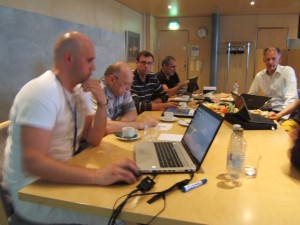Most of the contributions to the science of training come from the former East-bloc countries, mainly from the Former Soviet-Union. Names like Matvejev, Werchoshanski, Viru and Bondartshuk have become household names in the literature about training for many West-European and US coaches. But maybe we forget that there were and there still are many others that have something to contribute, but were less lucky to speak a foreign language or had their work translated in English or German.
Also since 1991 state-support for sports has been greatly diminished and many sports scientists have moved to the US, Europe or elsewhere. In many cases the ones whose work got translated, created the foundation for our knowledge of training.
Normally we regard them as being true sport scientists, but they are criticized by others who state that what they have done is not really scientific. Now the question arises do we as coaches really care? We accepted a long time ago that our work is for a major part based of empirics and experience. But maybe there is a reason to listen to this criticism, not because it criticizes, but because it has something to add to our knowledge of training and adaptation.
Selujanov is still unknown to most of the coaching community, but his ideas are revolutionary.
He pointed out that there is very little development in training science since his Russian colleagues published their works in English. That might also be a reason why there is so much influence from fitness ideas and gadgets or from nutrition or sports psychology in elite sports training. Training science came to a halt. No more new periodisation models have been developed since the 1990’s.
Selujanov wrote a book about biomechanics in 1984, together with Vladimir Zatsiorsky. Now his main topic is adaptology or the ways the human body adapts to training load. I got interested in his work mainly through the German translation of his articles in the journal Leistungssport by Peter Tschiene.

One of his criticisms towards current training science is that it collects data from many individual athletes, adding them and getting an average. But this does not create a condition for generalization. A simple example: after ending the general preparation period, athlete A peaks after 1 month and athlete B peaks after 5 months so the average athlete peaks 1+5/2 = 3 months after the end of the general preparation period. It is obvious that this generalization is not justified. Many other individual variables are not taken into account, like nutrition or even the use of performance enhancing aids. So if one wants to generalize, one should look for variables that have the same general validity for every athlete. Not an easy task we can say. But with the help of the right formulas, algorithms and computer simulation models we might be able to come up with new ideas about training and adaptation in the short and in the long term. And this is the main work of Selujanov.
Somehow, any adaptation to training has to show up in structural, functional, physiological and biochemical changes. If we have a look at the level of organs, we can find e.g. hypertrophy (=increase in mass) of muscles or hypertrophy of hormonal glands. And if we look at hypertrophy at muscular level: we can distinguish between e.g. hypertrophy of myofibrillar proteins, or hypertrophy of mitochondria.
Now all these factors have been measured and can be put into formulas and algorithms for computer models. During the last 30 years Selujanov has been working on mathematical models to establish for short, middle and long term adaptation to training loads. Main factor is the impact of the training load on RNA. Based on new tests for this, the effect of specific training load can be monitored and principles for training loads can be derived through computer modelling.
Even though as coaches we feel this is a rather synthetic approach in our real-life situation. It might be one of the few possibilities to turn around from the dead-end road we are driving into right now.
Selujanov is also scheduled to come to the US for lecturing in 2014. Stay tuned about this interesting development.
